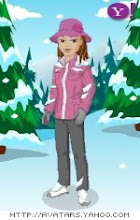"The name School 2.0 was chosen to encourage a discussion about the 'next generation of school' that can be supported by an integrated technology infrastructure." (p. 188).
Web 2.0 tools and the internet capabilities and applications are creating a fast-paced, changing
global communication network with the potential to enhance or change the current school/educational service delivery model. In this chapter, the authors have compiled some ideas of how these changes might create new schools as well as new teacher, librarian and administrator roles. In fact, one suggestion is that technology will enable communities of learners to 'get together' in ways that may make the physical facilitities unnecessary. This is already happening with distance delivery and online education (this class being a case in point!). Age-related classes would give way to ability groups. The role of the teacher may evolve more into tech coordinator and info facilitator in teaching students how to use tech tools and how to research their topics of choice. ('Knowledge Navigators,' p. 179).
The authors encourage educators to send ideas about how they're using technology in their classes and schools for contributions to their next book.
(e-mail: gwen_and_lynne@yahoo.com)
